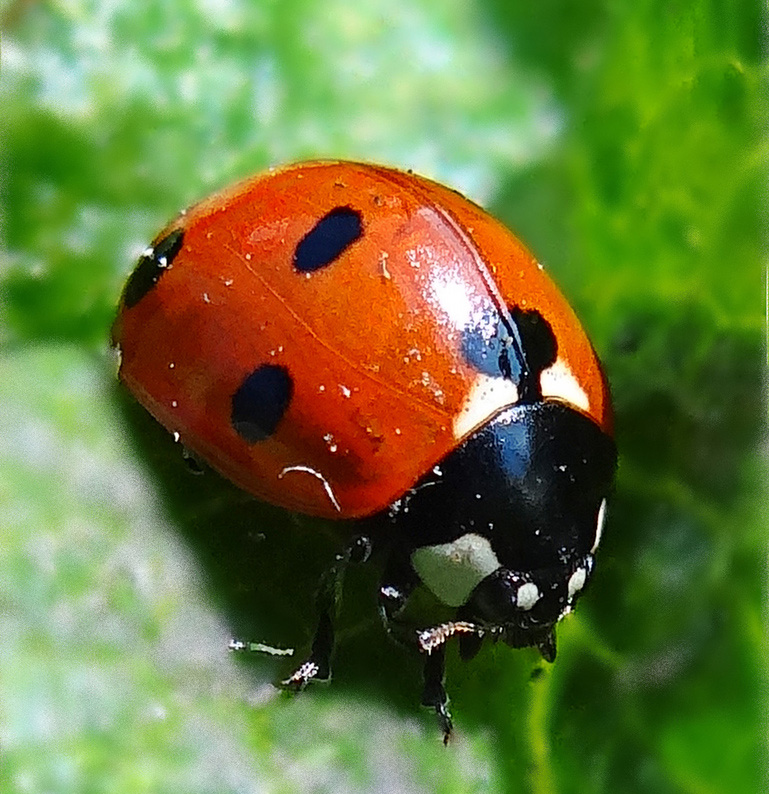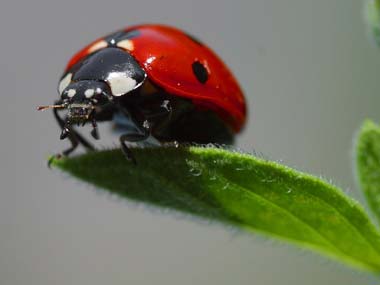Ladybug; photo by GabiV / hopeful<3 (on/off) on Flickr (noncommercial use permitted with attribution / share alike).
Official State Insect of Tennessee
The ladybug (also called lady beetle or ladybird beetle) was designated an official state insect of Tennessee in 1975 (as was the firefly). The honeybee was also adopted in 1990 as Tennessee's official agricultural insect insect, and in 1995 the zebra swallowtail butterfly was recognized as the official state butterfly.
Children love the iconic ladybug; North Dakota, Ohio, Massachusetts, New Hampshire, New York, and Delaware also recognize the ladybug as an official state symbol. All State Insects
Ladybug Facts
Ladybugs help gardeners and farmers by eating tiny insect pests that damage plants. A ladybug can consume up to 60 aphids per day, and will also eat a variety of other insects and larvae harmful to plants (including scales, mealy bugs, leaf hoppers, mites, and other types of soft-bodied insects), as well as pollen and nectar. Ladybugs produce a chemical that smells and tastes terrible as a protection from predators.
According to John Losey, a Cornell University entomologist who leads the Lost Ladybug Project. (a project funded by a National Science Foundation grant recruiting citizen scientists, particularly children, to search for nine-spotted ladybug and other ladybug species and send photos of them to Cornell for identification and inclusion in a database), there are about 5,000 species of ladybugs, also known as ladybird beetles, with about 450 species in the United States.


